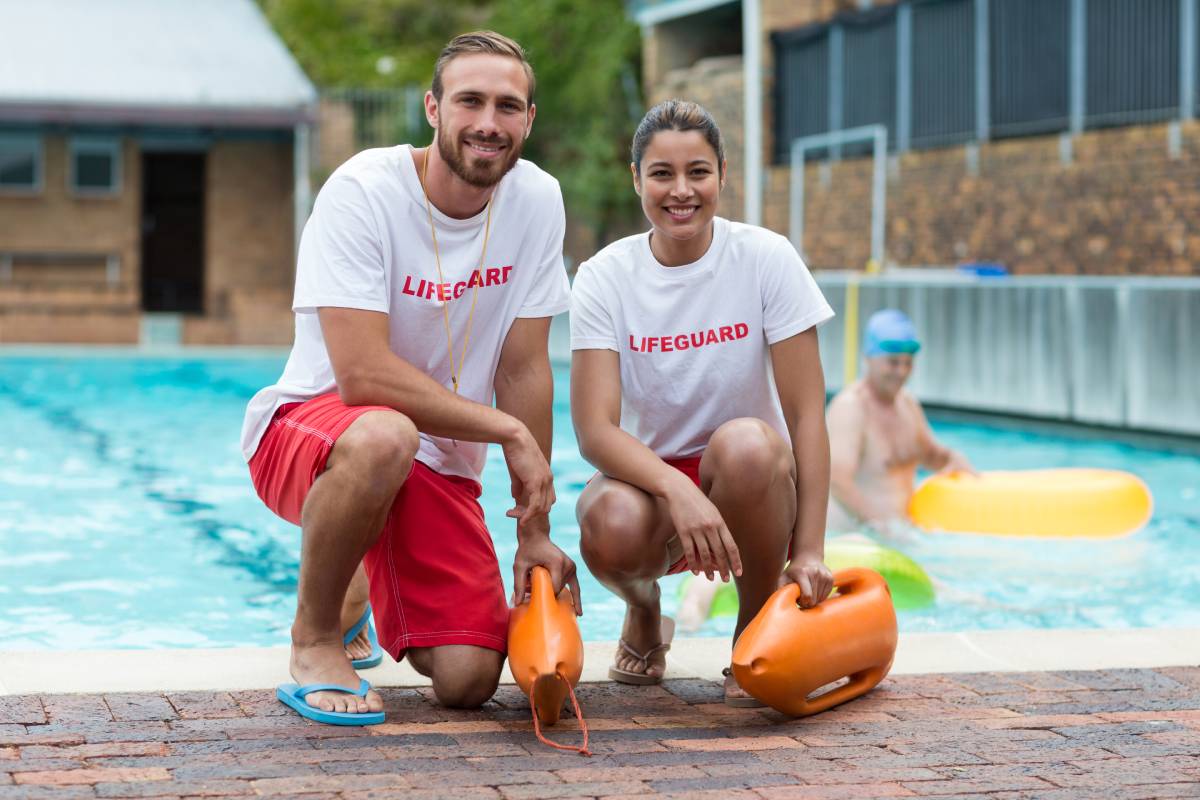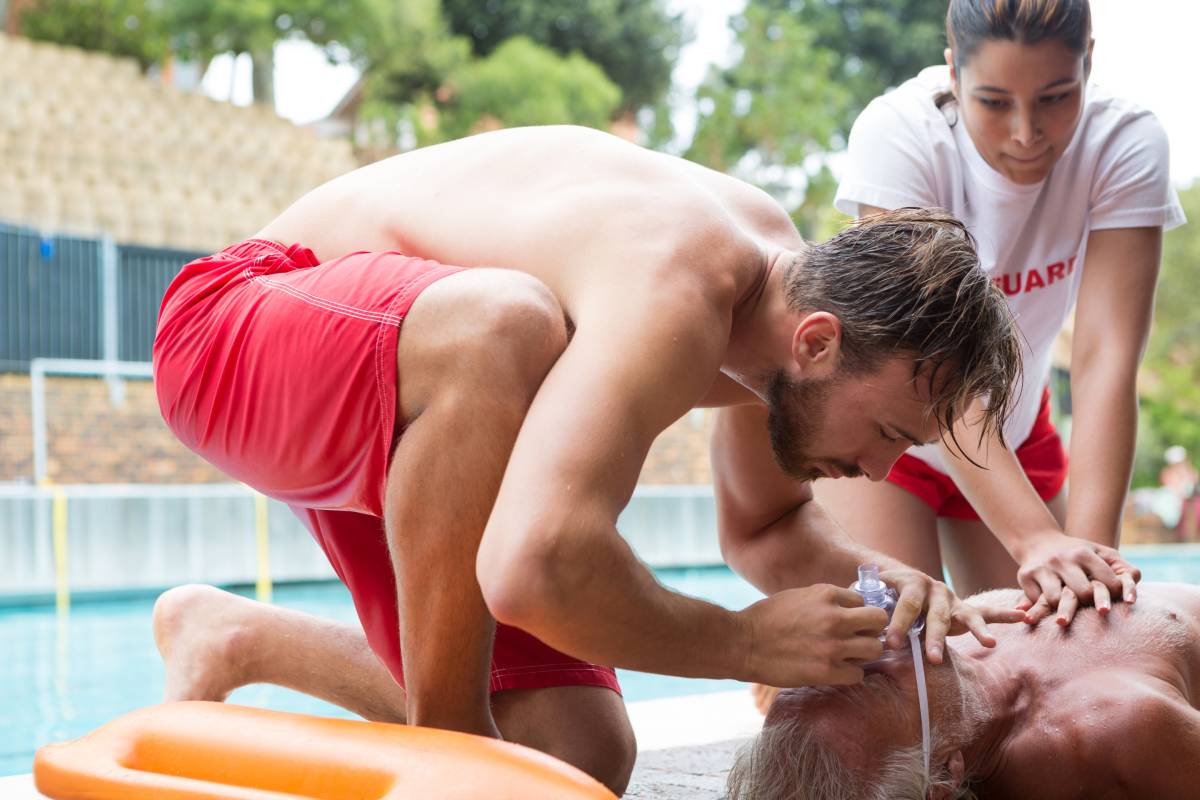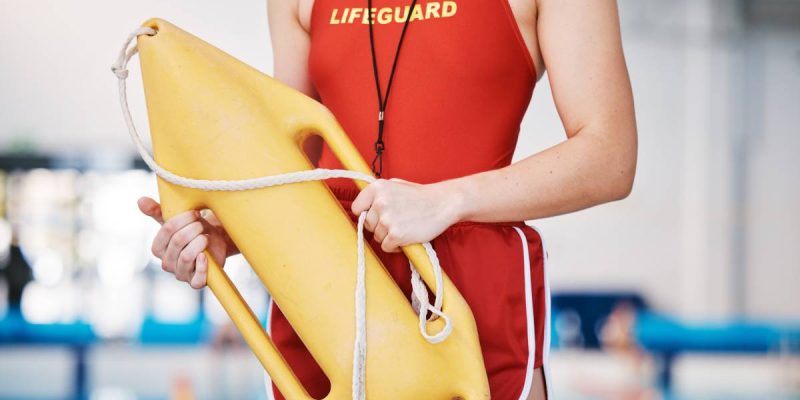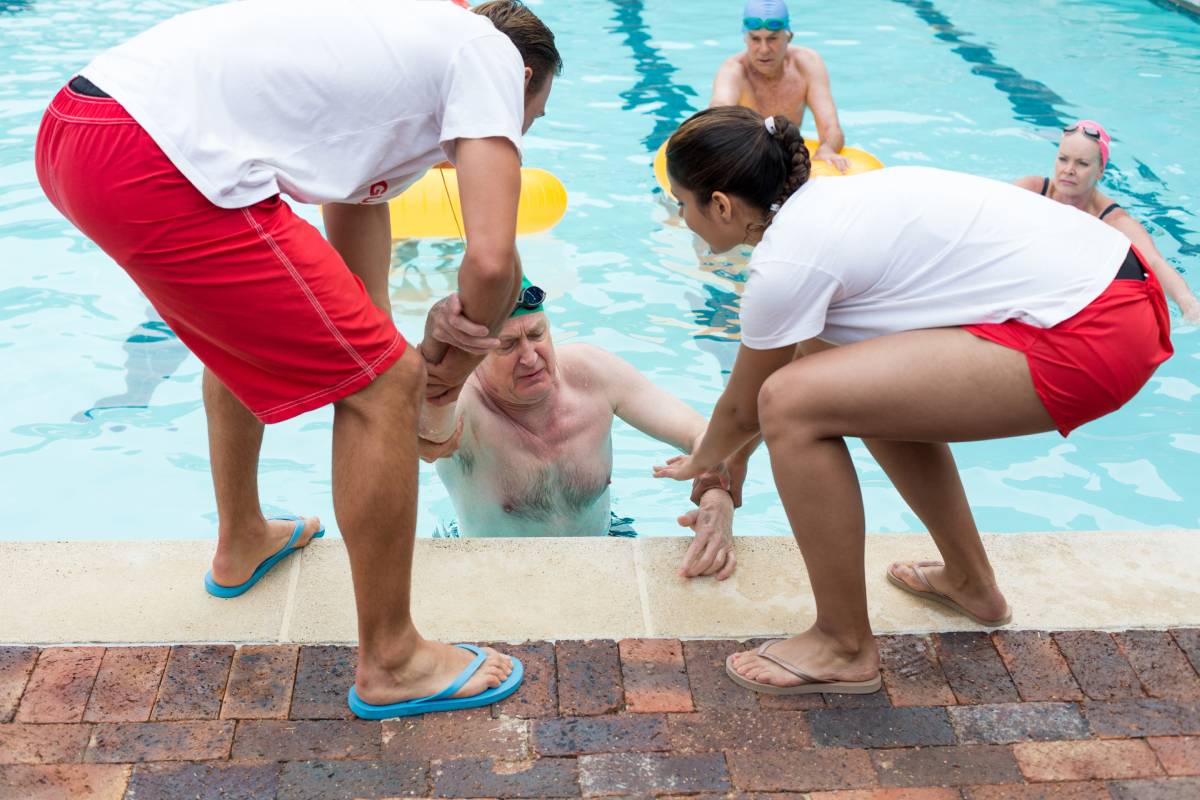The role of a lifeguard is both demanding and dynamic. Lifeguards operate in various environments, including swimming pools, ocean beaches, and lagoons, each presenting its own set of challenges and requiring a unique skill set.
Despite these varying conditions, there are established minimum standards of training that all lifeguards must meet to be eligible for the job.
Becoming a Pool Lifeguard in Australia
Essential Qualifications
Becoming a pool lifeguard in Australia starts with obtaining the necessary qualifications. The primary certification required is the RLSSA Pool Lifeguard Award, though the specific license may vary by state or territory. This qualification ensures lifeguards have the essential skills and knowledge to handle various incidents that can occur at indoor swimming pools, outdoor pools, or aquatic centres.

Comprehensive Training Program
The RLSSA Pool Lifeguard Award covers a comprehensive training program, which includes:
- Water Safety: Learning about the principles of water safety.
- Rescue Techniques: Training in various rescue methods.
- First Aid: Gaining skills in first aid to manage injuries.
- Emergency Response: Learning how to respond to emergencies.
This training is crucial because lifeguards are responsible for the safety and well-being of all pool users.
Enrolling in a Lifeguard Training Course
The first step is to enroll in a lifeguard training course, offered by organizations like the Royal Life Saving Society Australia (RLSSA) and other accredited providers. Training typically includes:
- Theoretical Components: Learning about drowning physiology, legal responsibilities, and water safety principles.
- Practical Sessions: Practicing rescue techniques, swimming skills, and using rescue equipment in the water.
First Aid and CPR Training
A key part of the training involves learning first aid and CPR, which includes:
- CPR: Performing CPR on individuals who are not breathing.
- First Aid: Administering first aid for cuts, bruises, and serious injuries.
- Emergency Management: Managing emergencies until professional help arrives.
Lifeguards must remain calm and composed under pressure, as emergencies can occur without warning.

Passing Assessments
After completing the training, aspiring lifeguards must pass a series of assessments to earn their certification. These assessments test both theoretical knowledge and practical skills, including:
- Demonstrating the ability to rescue a drowning person.
- Performing CPR.
- Managing simulated emergency situations.
Passing these assessments confirms the lifeguard’s competence to perform their duties effectively.
Ongoing Professional Development
Lifeguards must participate in ongoing professional development, which includes:
- Regular Re-certification: Refreshing skills and knowledge to stay updated with the latest practices.
- Workshops and Additional Training: Attending sessions to enhance skills further.
Role and Responsibilities
Working as a pool lifeguard is not just about sitting by the pool and watching people swim. It requires:
- Vigilance: Constantly monitoring the pool and its users.
- Physical Fitness: Maintaining the fitness needed to perform rescues.
- Responsibility: Ensuring the safety and well-being of all pool users.
Lifeguards must be prepared to act quickly in emergencies, provide excellent customer service, and maintain a safe and enjoyable environment.
Handling Small and Large Pools
Even small backyard pools, whether they are fibreglass, above-ground, or in-ground, can become dangerous in the blink of an eye. The rigorous training lifeguards undergo prepares them to respond effectively in such scenarios.
For lifeguards working in large, Olympic-sized public swimming pools, specific training requirements are in place to ensure they can handle the challenges of their environment:
- Physical Fitness: Lifeguards must demonstrate a high level of physical fitness and swimming proficiency to effectively monitor larger pools. For example, they are required to swim 400 meters continuously within 13 minutes, performing 100 meters each of freestyle, breaststroke, survival backstroke, and sidestroke.
- First Aid Certification: In addition to swimming skills, lifeguards in public pools must hold a first aid certificate recognized in their respective state. This certification ensures they are prepared to provide immediate medical assistance when needed.
Beyond the Basics
It’s reassuring to know that the lifeguards overseeing public pools are not just there for a suntan or to look cool. Their presence signifies a commitment to safety and the ability to handle numerous challenging situations.
Vigilance and Swift Action
Lifeguards are trained to remain vigilant and ready to act swiftly to prevent accidents and save lives. This extensive training and preparation enable them to respond effectively to emergencies, including:
- Rescuing Drowning Swimmers: Lifeguards are trained in various rescue techniques to safely retrieve swimmers in distress.
- Administering CPR: In cases of cardiac arrest or near drowning, lifeguards are equipped to perform CPR, providing vital life support until further medical assistance arrives.
- Managing Medical Crises: Lifeguards are prepared to handle a range of medical emergencies, from minor injuries to more serious conditions, ensuring prompt and appropriate care for all pool users.
Commitment to Safety
The presence of lifeguards at public pools signifies a commitment to safety and the well-being of swimmers. Their training goes beyond mere observation; it equips them with the skills and knowledge needed to respond effectively to any situation that may arise.
Conclusion
Ultimately, the role of a lifeguard is indispensable in ensuring the safety of swimmers in various aquatic environments. Their comprehensive training, dedication to safety, and ability to respond effectively to emergencies make them essential guardians of our public pools and beaches.
When you see a lifeguard on duty, you can feel confident knowing that they are there to protect you, equipped with the skills and knowledge necessary to save lives and prevent accidents.





















